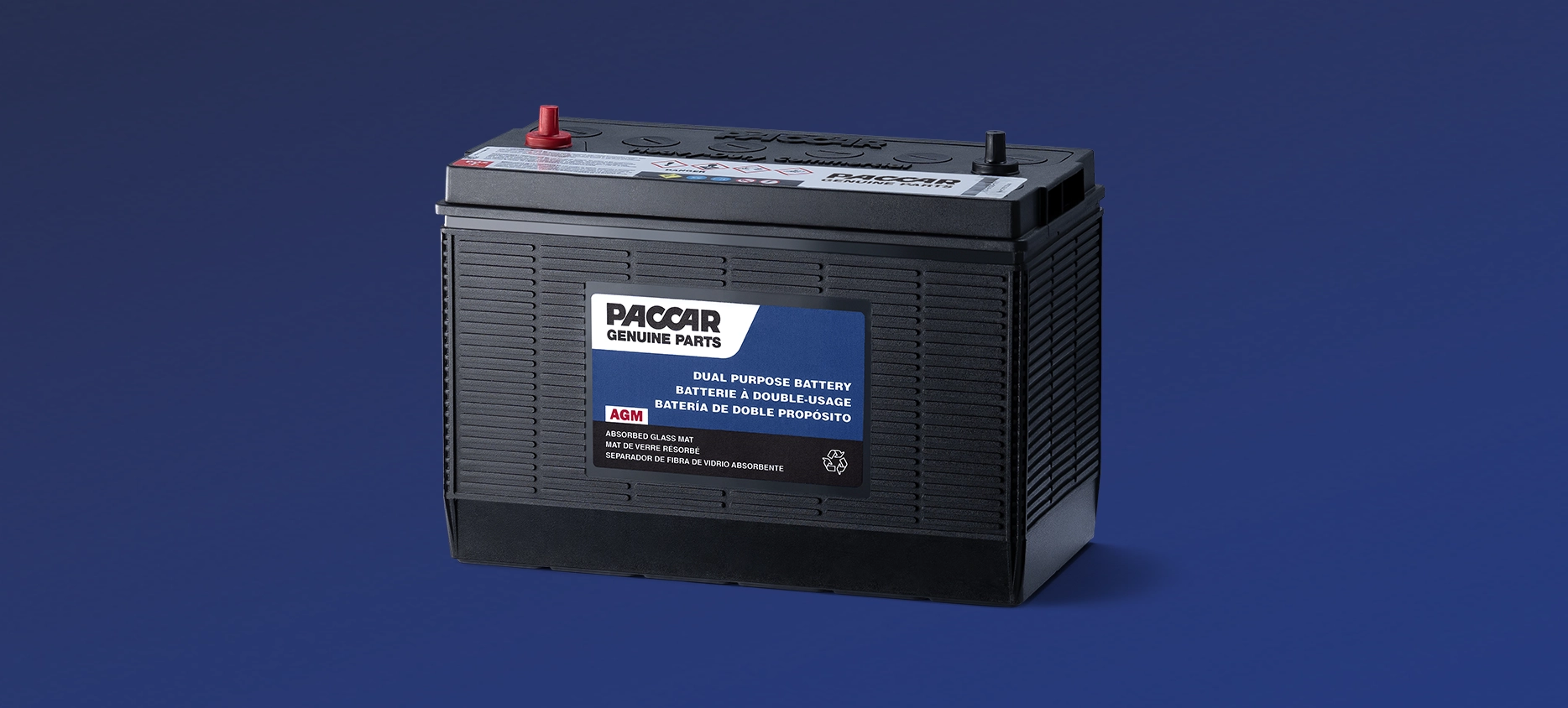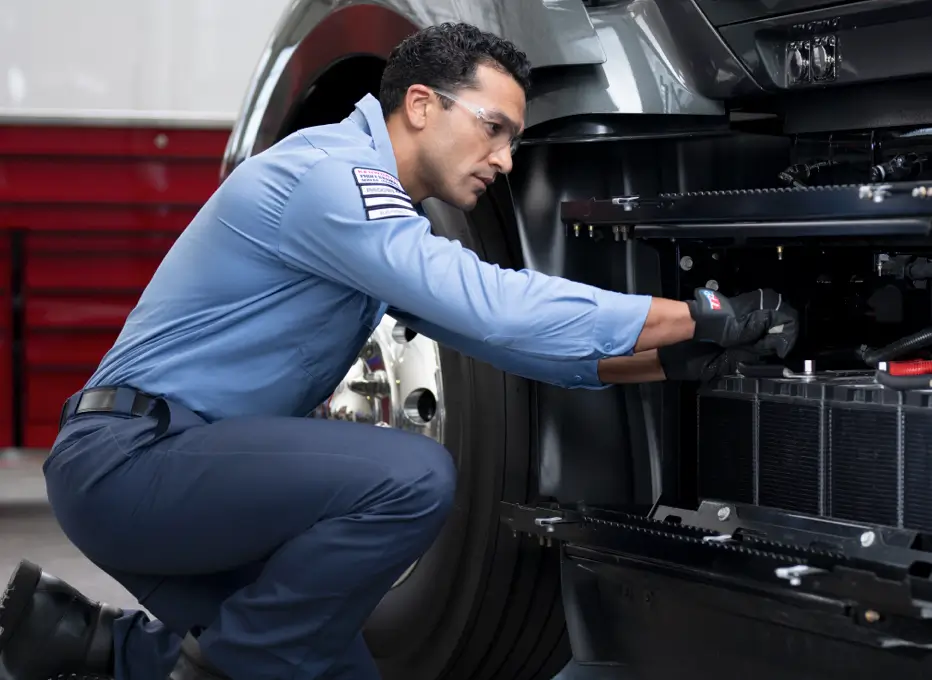
PACCAR Genuine Parts Tips To Keep Your Battery In Top Condition
PACCAR Genuine Parts knows that a dependable battery is key to your success. Follow this checklist to help extend your battery’s life.
Maintaining your battery appropriately is essential during both the icy winter months and the scorching summer months.
The same testing, checks, and maintenance you use to prepare for winter driving should be employed for summer driving as well. Just like cold weather, hot weather also places significant demands on batteries.
Tips to help extend overall battery life
During scheduled Preventive Maintenance (PM), check and confirm the following:
- Battery connections are clean and free of debris.
- Battery connections are tight.
- Hold-downs are properly secured.
- Confirm that the battery pack is fully charged.
- Flooded batteries are fully charged when the open circuit voltage is 12.6 volts and AGM batteries are 12.8 volts.
- Opportunity charging is also advised. Opportunity charging is when the battery pack is placed on charge while the truck is in for PM. This charging period will help to “freshen” the battery pack and ensure batteries are fully charged.
- Be sure to check cable connections at the battery and alternator. Rust and/or corrosion will affect how the battery charges.
- If necessary, do a voltage drop test from battery to alternator to ensure cables are acceptable to use.

BATTERY INSPECTION
Inspect the battery pack as part of your regularly scheduled vehicle inspection, any time the operator is experiencing “hard starts”, or the truck is being used for shorter runs with hotel loads.
When the battery pack is tested look for the following factors:
- State of charge of the battery pack.
- Full charge is 12.6 volts for flooded batteries and 12.8 volts for AGM batteries.
- Hold-downs and battery connections are securely fastened.
- If the battery pack is found to be in a discharged state, the batteries should be fully recharged and tested with either a load or conductance tester.
- It is recommended to test individual batteries.
- Be sure to check what loads are being used and how much power is being taken by the additional use of air conditioning during summer months.
- There may be loads that can be turned off to maximize the power in the pack for overnight use.
NOTE: Batteries are consumable items and have a limited lifespan. If the battery pack is two to three years old, the user may want to consider replacing the batteries to reduce the risk of a no-start situation or emergency repairs.
Conductance testing
NOTE: Midtronics is one type of conductance tester.
The following describes how to properly use a conductance tester. Conductance uses the battery’s response to a very small signal in an attempt to predict the effects of a much larger current. Conductance testing is ineffective on a discharged battery. If the battery is known to be discharged or if the tester tells the operator to charge before testing again, the battery must be completely recharged.
- Connect the positive (+) tester clamp to the positive (+) battery terminal. Then connect the negative (-) tester clamp to the negative (-) battery terminal. If the battery has more than one pair of terminals (i.e., top posts and side terminals), always perform the testing on the terminals that are used in the vehicle.
- Use the proper charging adapters for stud or side terminal batteries. Never connect tester to a bolt or stud.
- Turn on if needed. Enter the requested information. Be sure to distinguish between a CCA rating and a CA or MCA rating. If no rating is available, use the minimum OE battery CCA requirement of the vehicle.
- If the tester says to replace a battery that was tested in the vehicle, repeat the testing after removing the cables and cleaning the posts.
- Use proper lead adapters for testing and charging. Never clamp chargers or testers to the threaded stud or to nuts.
STATE-OF-CHARGE
- State-of-charge is estimated from the Open Circuit Voltage (OCV). Battery design varies. Typical values are shown on the charging time tables.
- State-of-charge value is used to determine if the battery is in a testable state or to estimate how long charging will take.
- A true 75 percent or better charge state is needed for most testing (12.4 volts for a flooded battery and 12.6 volts for an AGM battery).
- Any recent charging activity will cause the OCV to be elevated from the true (equilibrium) value.